Observations Innovations Comment…..
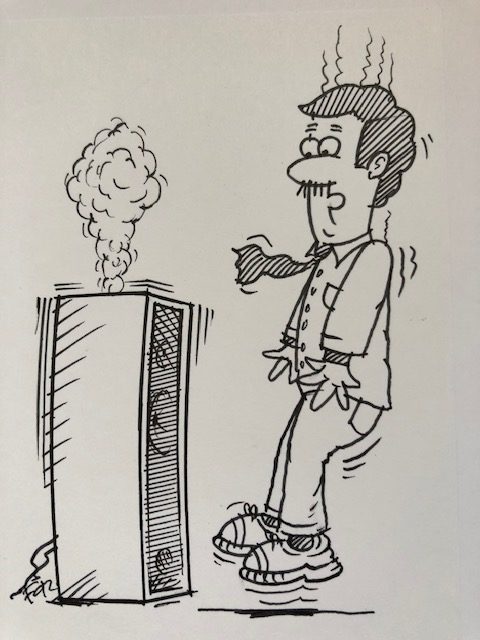
As well as a place for writing about some of the more interesting (to us anyway) things going on in the shop / and our sister company MusicWorks, we also thought this might well be a good place to allow our customers and other interesting parties write about their experiences with Audio Extremism.
All products mentioned are available for home trial, by arrangement.
We say a measure of performance of a good HiFi system is its ability to make you go, “Wow, what’s this? Oh, but I don’t like (insert pet hate) music”. In other words it renders the unintelligible meaningful.
2nd January 2023
Move over Martin Luther
We’re here for people who ‘get’ great performance, and who are seeking out ways of achieving greater. So, if you ‘know’ cables can’t make a difference, or you ‘know’ mains power or equipment supports are just accessories, then you better stop reading here, because what comes next is going to annoy the hell out of you.
We regularly put lesser systems, from great manufacturers on in our dem rooms, and it is always far easier, and cheaper, to move these system’s performance forward using isolation and cabling, rather than spending considerably more on a better component, or pair of speakers. Of course, these things make a big difference too, but sometimes accessing performance benefits relies on making them available to hear.
Recently we have had this philosophy rammed home. We had a very high performance amplifier in the shop for evaluation, it was compared to our established reference. After careful set up the listening began. We were of course mindful to set the new system up in a way that the manufacturer would approve of, trying to copy (as closely as possible) the set up I had heard and been impressed with several days earlier.
The upshot of this evaluation was that the supports and the cabling contributed far more to the performance of the system than the approach of two very different amplifier manufacturers. Not just in esoteric ways, but in hit you in the face “I don’t like this piece of music”, to, “this is a wonderful piece of music” ways. All comparisons were done using cabling of the calibre that would be expected in a system of c £100,000, so we were not moving from ‘free’ cables to multi thousand pound cables here.
This evaluation took place over several days, in front of around a dozen people. There was no disagreement between any of the people who heard these systems about the magnitude and importance of the changes.
It becomes clear that in a transparent, low noise floor, coherent, wide dynamic range system that produces energy on demand, the things that will improve performance most are the cables, the tables, and the the power distribution.
And
Once optimally set up, differences in performance as components improve are much more readily perceived.
While mainstream press concentrates (economic necessity and political reasons (haters)) on boxes, the industry is not addressing issues fundamental to its own long term health. A lot of insiders know this, and won’t / can’t speak. Time for a change?
PS For sad Sci Fi fans: I am cheered to here that the word “grok” has officially entered the lexicon, so please substitute grok for “get” above. It is closer to the meaning intended.
16th April 2022
Further AcouPlex Adventures
The first time your system gets transparent enough for you to hear that moving a piece of cable makes a difference to the sound of your system, is the day you realise that isolation of equipment is a real thing. The first time you hear an isolation product priced at a few hundred pounds make more difference than spending thousands on a new black box, is the day you realise the fundamental part isolation plays in the performance of a good system. For years we have been banging on about this, and for years we have been getting better results. (Side note: quite a lot of isolation systems actually change a system’s performance for the worse – always try before you buy)
AcouPlex has been a game changer in the magnitude of the improvement it can bring to high performance systems. If you’ve been reading our blog, you will have gathered that we are pretty excited about applications, and more are unfolding all the time.
The latest AcouPlex accessories to emerge blinking into the light of day, include:
- ReFlex Block upgrades
- AcouPlex Spike – for ReVue, ReVue Ultra tables, and speakers etc tapped with M8 threads
- AcouPlex Spiked discs – 40mm x 25mm high for equipment isolation
Talk to us if you would like to try any AcouPlex options in your own system.
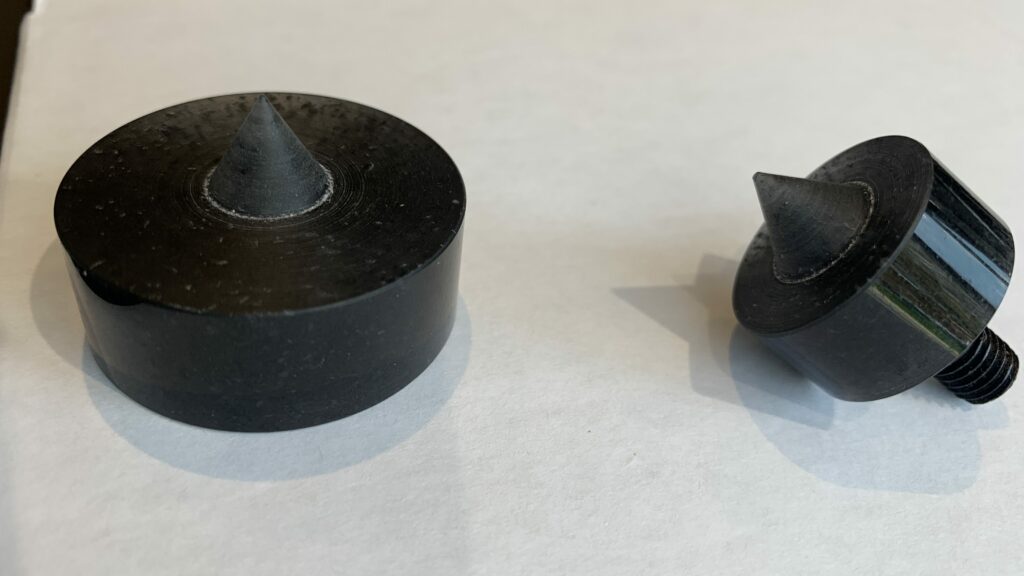
2nd Time lucky
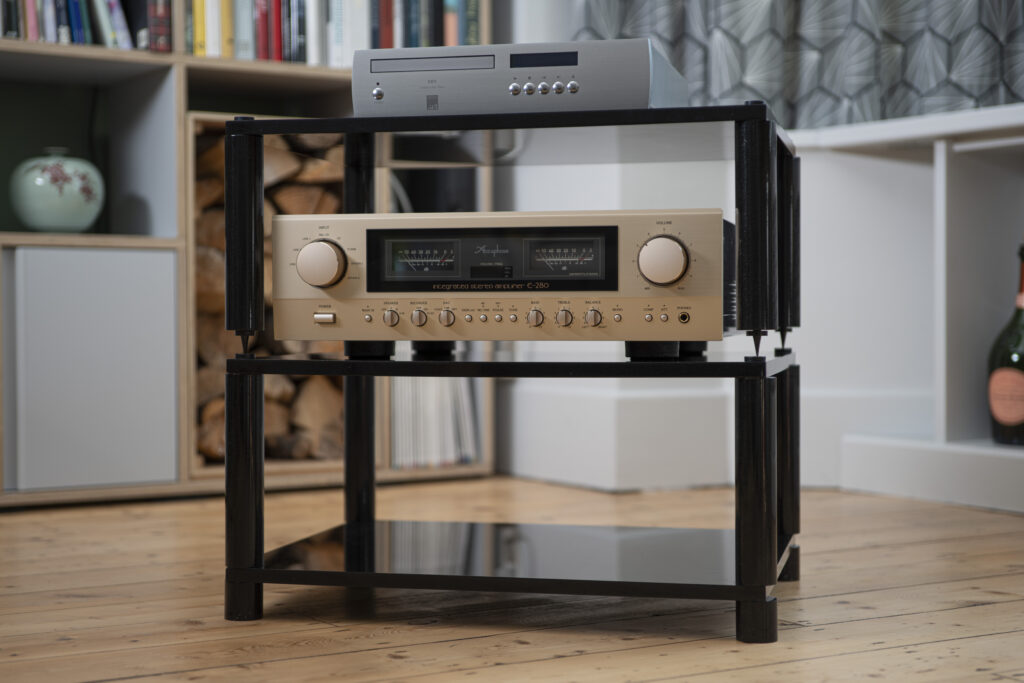
Our very own Steve J wrote an article for the blog about his experiences with AcouPlex. Steve very much has a parallel community of music lovers who are mainly using valve amplifiers. Despite this apparently divergent technology (you know (like CD and vinyl used to) the results are more similar than they are different. Time coherent, wide bandwidth systems focusing on capturing the musical event. This is why his ramblings (sorry eloquent elucidation) are very relevant – they tell us that if you share our objectives, things seem to work in a similar fashion.
Why 2nd time lucky? Well his first article dwelt a little too much on a certain television programme featuring stark naked contestants, and, on grounds of good taste had to be rejected.
Several musicWorks products mentioned here are currently only available through The AudioWorks.
steve-J-Evolution-or-Black-Magic4th December Turntable Rumblings at The AudioWorks
We thought we would add an entry level turntable from the venerable German turntable company Dual. Famous forty years ago for providing a gateway drug to great Hi Fi performance in the form of the 515 turntable. The name disappeared from the UK scene for twenty years or so, then appeared a couple of years ago with an unprepossessing range that we carefully ignored. The recently improved models looked much better designed to us than the previous models, and, we thought, would offer an interesting alternative to the rega Planar 2 / 3.
Well.
The turntable (CS 418) looked as nicely designed in the flesh as it appeared on paper. And for £499 you have included a very decent moving magnet cartridge (Ortofon 2M Red, £95) and an inbuilt phono stage. So, plug and play into any amplifier.
Playing the turntable revealed that despite a cheap and cheerful tonearm, it was bags of fun. Musically very communicative, if a little rough around the edges sonically. But, it could be tweeked, and we wanted to see where it could go.
First port of call was adding a MusicWorks AD40 (AcouPlex damper) available as a turntable puck, and resting the turntable on the MusicWorks ReVue Ultra G2 table (gross overkill, but what the heck) and stood back. The transformation was phenominal, taking this turntable into a different, and much higher performance league.
We now were on a mission. The supplied phono cable is very basic, as you would expect, but could be easily swapped due to RCA connections. So, could we do more with a superb Audiomica Quartz reference phono interconnect? Indeed you could.
So good was the performance that we decided to take this package to our Music @ The Magnet vinyl evening last Thursday where it played its heart out for over 4 hours on a huge variety of music. A star is born.
We have now received the Dual CS 518, which for an extra £150, has an improved tonearm. We will report shortly on that.
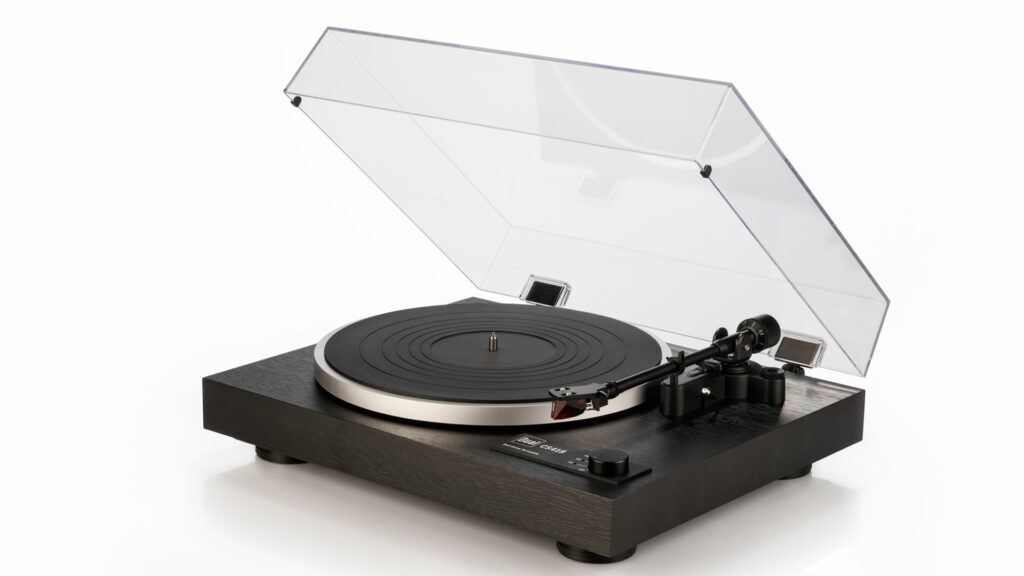
2nd November 2021
Nearly back to normal after lock down, and a Vinyl evening now planned at our beloved Magnet Inn for Thursday 25th November, 7:30 pm til late – our system, your music….
From our now re-convened Thursday evening music / system listening sessions, we have had Simon (a customer) volunteer to write his experiences of his journey with ourselves over around a four year period.
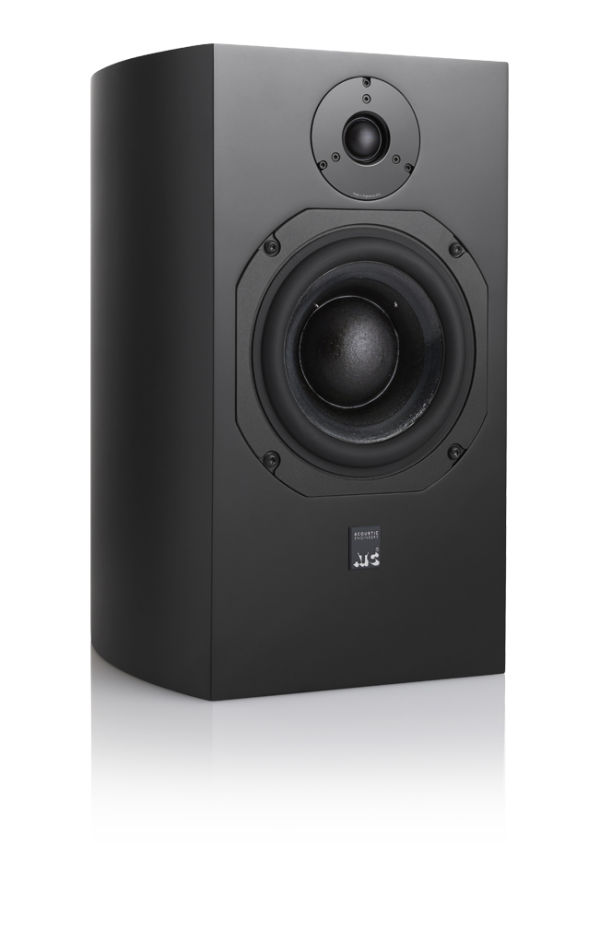
Simon’s Story
Simon-Audioworks-Blog-202111-Google-Docs13th April 2021
We have a customer called Tony, who relates his experience in upgrading his system, and the effect it has had on music he thought he didn’t care for. His direction of travel may surprise some, but we blame Steve J for this malign influence…
Tony-W-Audio-Works-and-Me380-final-versionMarch 2021
AcouPlex continues….
The applications of AcouPlex have been surprising. I once told the editor of a magazine doing a review of some MusicWorks isolation products, that our isolation was about making small rooms sound like big rooms – all the routes for energy to dissipate in a very big room are denied to us in a typical UK house. So, blocking the energy that reaches the equipment is paramount if you want to achieve top performance. AcouPlex is a material that just keeps on giving in this respect.
I thought I’d just include some updates on the use of AcouPlex in my home system, and share some of my own experiences.
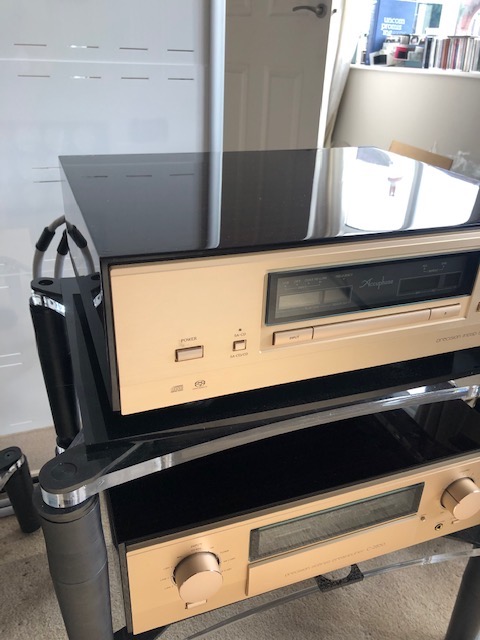
Here we have my Accuphase DP-750 supported by the new IP2 large isolation shelf, which is itself supported by AcouPlex ReVue corner brackets. Changing from the original IP1 shelf revealed a very obvious increase in available dynamic range, and tunefulness / harmonic accuracy as more low level resonances were cleared by the better platform.
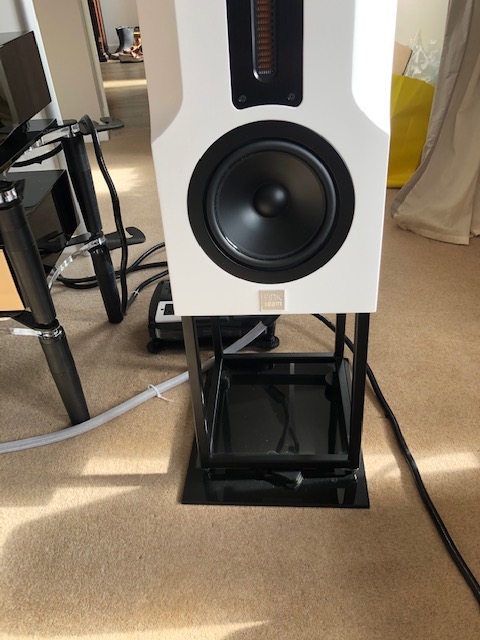
The use of AcouPlex as effective speaker isolation was not a big surprise. We had been very pleased with the way AcouPlex discs (50mm) had isolated speakers in the past, but using an IP1 as an isolation platform had a profound effect of decoupling the speakers from the room. The speakers (Finkteam Kim) already address the issue of room decoupling, but the isolation platforms go a whole lot further. Closing in on the idea of the perfect point source window into the recording environment.
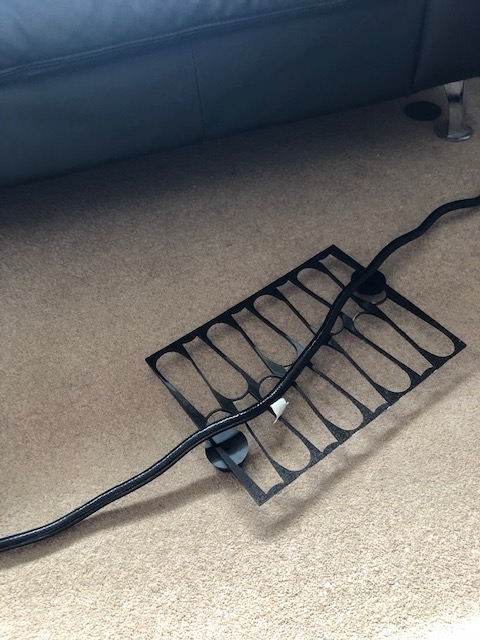
The final image is a jury rigged piece of AcouPlex scrap that was put into my system as a cable isolator last night. Everything in system isolation builds on what has gone before, so you usually end up thinking that the last thing you did was the biggest ever, that happened in this case….. The realisation that feedback into cables (power cables!) is a big thing had long been a known issue, but totally satisfactory (not swings and roundabouts) isolation proved a difficult nut to crack. This may now have been solved. More experiments are needed, and I will report back when (if) there is a real product..
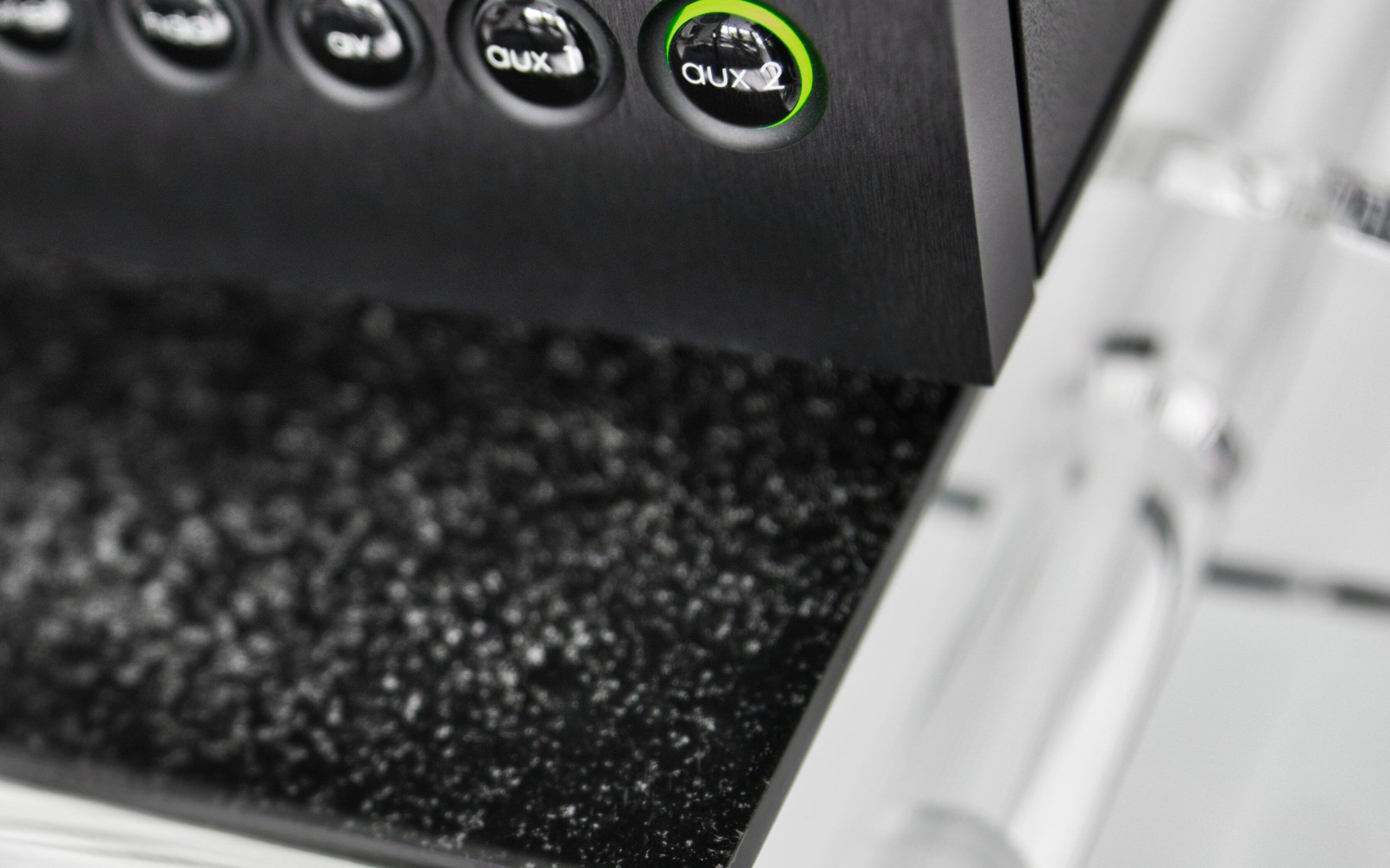
What is it?
Well, it’s a novel cast material (Acrylic / PEEK / graphite / PTFE) only available from MusicWorks. On cursory inspection it looks like black acrylic, but look more closely and you will see a powder suspended in an acrylic matrix.
Introduced around two years ago, AcouPlex is the most exciting advance in system performance we have heard since the introduction of the MusicWorks mains distribution block, nearly 20 years ago. So, why haven’t we or MusicWorks made more fuss? Why no reviews?
Simple answer. It is available in very limited quantities because production is so complex and time consuming. We can sell all that can be made with nothing more than in shop / word of mouth marketing. Anyway, with the possibility that AcouPlex production can be stepped up, we have decided to say a bit more about it, and its effects.
Perhaps the biggest stir hads been observed in the Naim user community, where the MusicWorks ReFlex block, now with AcouPlex base upgrade, is well established as a foundation product for releasing the potential of these systems (Naim forum discussion) – ironically, the MusicWorks power block was originally designed for Naim systems, but politics made it a difficult sell for a number of years.
As an isolation material AcouPlex can be hugely influential under equipment, or loudspeakers.
AcouPlex products:
Isolation Platform IP1 41 cm x 34 cm x 10mm (nominal) £599
Isolation Platform IP2 50cm x 36cm x 10mm (nominal) £699
AcouPlex 50mm x 5mm (nominal) Discs £25 each
ReFlex G3 AcouPlex block base £350
If you want to try some AcouPlex for yourself, give us a call on0161 428 7887.
Nic’s Story
A customer with a modest, but high quality system, wanted to explore some of the places where your average Rega customer doesn’t go, and write up his experiences. So, here is Nic’s story:
Nic-ReFlex-ReEntry-ReVive-1We have incorporated our Cabin Fever blog into our new general blog, so, for those who missed some little upgrade experiments, here they are:
1 Socket to me….
If you run your system from a distribution block, and you are using a dual socket as the outlet, there will almost certainly be a difference between the sockets. If you are running directly from a dual socket, try swapping. To hear the effect clearly, try playing a piece of music with strong rhythmic accents.
Warning under no circumstances either: put your fingers in a mains socket, or, use mains sockets or a distribution block with USB outlets. The first might kill you, the second will KILL your music.
2 Get rid of those links….
If you are using speakers with bi-wire links made of metal plate, or even high performance speaker wire, now is the time to get a big uplift in your speaker’s performance. Feed the speaker using a ‘Y’ adaptor – see picture, you can make your own from speaker cable of choice, and Z Plugs. Result: more coherence, the music will seem more focused and energetic……
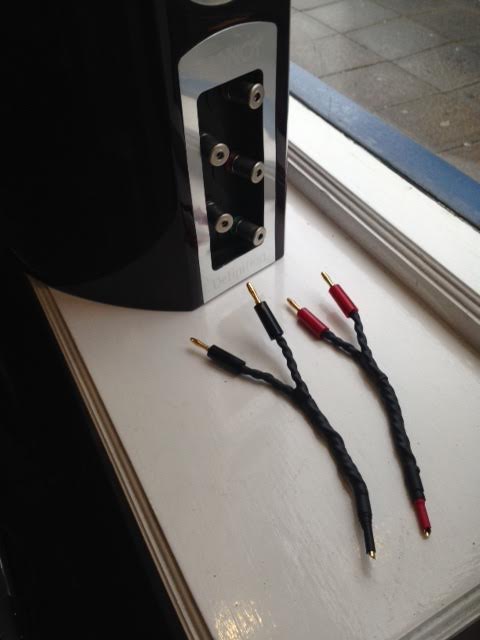
Contact us if you want them made up up for you.
3 Splendid (opto) Isolation…..
If we’re honest, we’ve struggled to get streaming to sound anywhere near as good as a top CD player or turntable. However a big step forward came along as we prepared for a show last year using a streamer with an optical network connection. This streamer sounded like good streaming with the electrical connection, but was tranformed when using the optical connection.
Since the signal was reaching the switch electrically, and only at that point converted to an optical signal, there were two possibilities:
a) The optical interface on the streamer was miles ahead of the electrical one
or
b) The conversion to optical was isolating the streamer from horrendous network noise
There was an easy way to find out, reconvert the optical signal to electrical (ethernet) and plug back in to the RJ 45 connection.
The result of the dual conversion (electrical / optical / electrical) was nearly as good as the optical connection..
So, if you want to transform your streaming, do a bit of opto isolation.
Below is our rig, which you can buy on the internet for around £100. This was the first step in this journey, get in touch if you like what you hear, and want more…
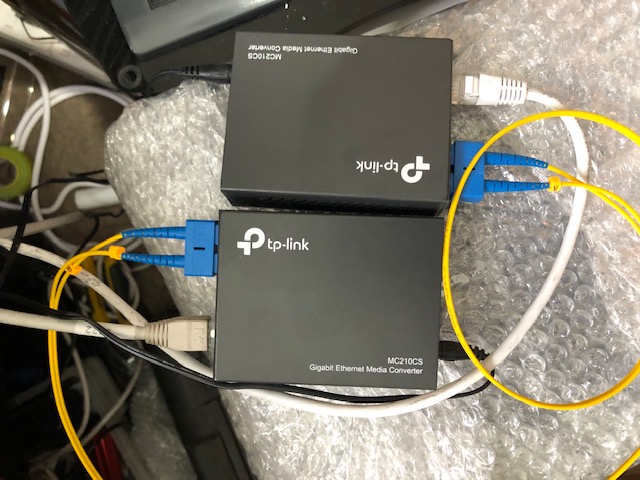
4 Careful with that alcove Eugene
Rooms are funny. Not laugh out loud funny, funny / peculiar. The whole sound of a system can change with where your system is located, not simply where you put your speakers. If you can, give it a go. Especially if your system is conveniently located in an alcove – this can really kill the sound of a system, crushing dynamics and timing.
So, if you have your system in an alcove, try moving it forwards a few inches. In fact if you have your system placed very close to a wall… just try moving it a bit further away. Once you’ve had one of those ear popping moments, you might want to try further placement changes, but do remember……different is not necessarily better, and give any change some time to settle in.
Finally. Don’t be surprised if the change you get is bigger than the last upgrade you did. Have fun.
